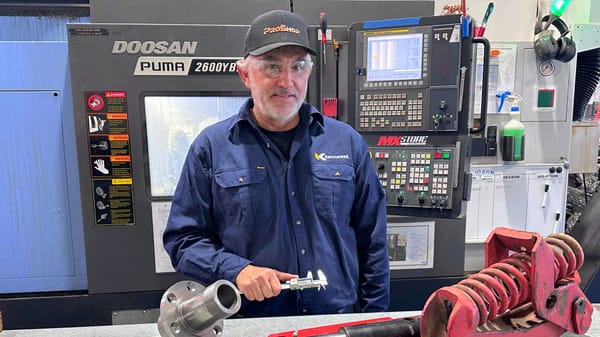Bridge Watersport Park approved after council changes its tune
A compromise put forward by developer Adam Bruce means a cable water sports park will be built in Murray Bridge after all.

This story was originally published behind Murray Bridge News’ paywall. Paywalled stories are unlocked four weeks after publication. Can’t wait that long? Subscribe here.

Adam Bruce can hardly wipe the smile off his face.
His dream of building a cable water sports park in Murray Bridge is one huge step closer to reality.
Just two months after it rejected the proposed tourist attraction, the local council assessment panel backflipped on that decision, agreeing to a compromise that will let it go ahead.
Mr Bruce and his business partners convinced the panel that it would be safe to build the park below the 1956 flood line.
“In terms of excitement and tourism, I think it’s going to be a big attraction,” he said after the hearing.
“Kids who would never have come to Murray Bridge in their lives, and adults, people from interstate and overseas (will come).
“The whole region is going gangbusters, between Monarto, the Bend Motorsport Park, the Bridgeport Hotel, job creation at Thomas Foods, what the council’s doing with the rowing club and the waterfront, and … we want to be a part of that.”
The park is not expected to open until late 2022, as a few more things will have to happen before construction can start.
A court case appealing the original decision will have to be wound up, and the proponents will need to buy a water licence and get building rules consent.
Still, after years of planning, it was a relief to make progress.
“We’re really stoked,” he said.
“There are a couple of steps to go, but this was the major hurdle.”

So why did the panel change its mind?
Back in November, the water sport park proposal was knocked back by the slimmest possible margin.
Three out of five panellists voted against it – and one very hesistantly – mainly because the park will sit below the 1956 flood line.
In most cases, permanent structures cannot be built below that line.
But lawyer Tom Game reminded the panel that things had changed since 1956, and floods were now “incredibly rare” along the Lower Murray.
Consultant Ken Body urged the panellists to consider the big picture, and how best to encourage tourism and vibrancy along the river.
“You’ve got someone pretty responsible in front of you here who’s looking to do something for the greater good of the community, not looking to make a quick buck and get out of it,” he said.
“I think you’ve got the best opportunity that you will ever have for a project of this nature.”
Under the compromise plan, the park’s main building – used as a kiosk and for equipment hire – will have to be constructed in such a way that it can be taken apart in the event of a major flood.
The park will also have to be fenced to prevent members of the public from wandering in and out on the river side, and an agreement will be struck to keep the site from turning into an eyesore if the business goes bust.
However, it will still feature two lakes: one for cable water sports, one for a water playground and quieter activities like swimming or kayaking.

Laws around 1956 flood line need to change, panel suggests
The panel’s decision may have wider implications for the River Murray floodplain.
Panellist Gavin Lloyd-Jones suggested it was time for the long-standing ban on development below the flood line to be reviewed.
“This matter has raised a broader issue around policy along the river, and we need to update that,” he said.
Council staff will bring a proposal to a future panel meeting.
Any change to planning laws would have to go through the State Planning Commission and the state Minister for Planning.
Disclosure: A quote in this post was amended to include a reference to the Bridgeport Hotel, at the request of Mr Bruce. Correction: An earlier version of this post gave an incorrect first name for Mr Daniel.





